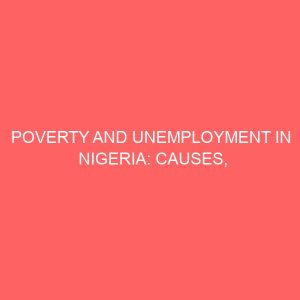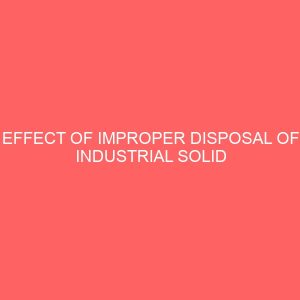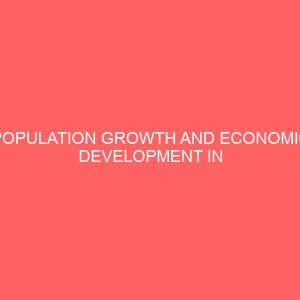Description
ABSTRACT
This study is an econometric method of research that analyzed the causes, effects and remedies of poverty and unemployment in Nigeria. It covered a period of 20 years 19912010 hence a time series analysis descriptive statistics and regression model was used to estimate the models and it was made use of secondary data which was fitted to the regression equation by the method of Ordinary Least Square OLS.the major discovery here is that unemployment rate, the level of education, the level of agricultural activities, health sector, population rate are the determinants of poverty rate in Nigeria. Finally this research work shows that the level of poverty and unemployment can be controlled and reduced with the use of human capital development to accelerate unemployment and poverty reduction in Nigeria.
TABLE OF CONTENT
Title Page
Approval Page
Dedication
Acknowledgement
Abstract
Table of content
CHAPTER ONE: INTRODUCTION
1.1 Background of the Study
1.2 Statement of the problem
1.3 Study Objectives
1.4 Research Justification
1.5 Scope of Study
1.6 Hypothesis Formulation
1.7 Limitation of the study
1.8 Definition of terms
CHAPTER TWO: REVIEW OF RELATED LITERATURE
2.1 Concept and definition of Poverty and Unemployment
2.2 Conceptual theoretical issues
2.3 Empirical literature
2.4 Causes of poverty and unemployment in Nigeria
2.5 Effects of poverty and unemployment
2.6 Overview of programmes aimed at poverty and unemployment reduction
2.7 Poverty, unemployment, economic growth and development
CHAPTER THREE: RESEARCH METHODOLOGY.
3.1 Method of data analysis
3.2 Definition and justification of variables
3.3 Aprior expectation
3.4 Model specification
3.5Nature and sources of data
3.6 Estimation procedure
3.7 Techniques of evaluating the results
3.7.1 Evaluation Based on Statistical Criteria First Order Test.
3.7.2 Evaluation Based on Statistical Criteria Second Order Test
CHAPTER FOUR:EMPIRICALRESULTS
4.1 Battery test
4.1.1 Unit Root Test Analysis:
4.1.2 Counteraction Test:
4.2 Presentation and Interpretation of Result
4.3 Economic Apriori Criteria
4.4 Statistical Criteria First order test
4.4.1. Coefficient of Multiple Determinants R2
4.4.2. The Students Ttest
4.4.3. FStatistics:
4.5 Econometric Criteria.
4.5.1. Test for Autocorrelation
4.5.2. Normality Test for Residual
4.5.3. Test for Heteroscedasticity
4.5.4 Test for Multicollinearity
CHAPTER FIVE:
5.1 Summary
5.2 Conclusion
5.3 Recommendation
Bibliography








Reviews
There are no reviews yet.